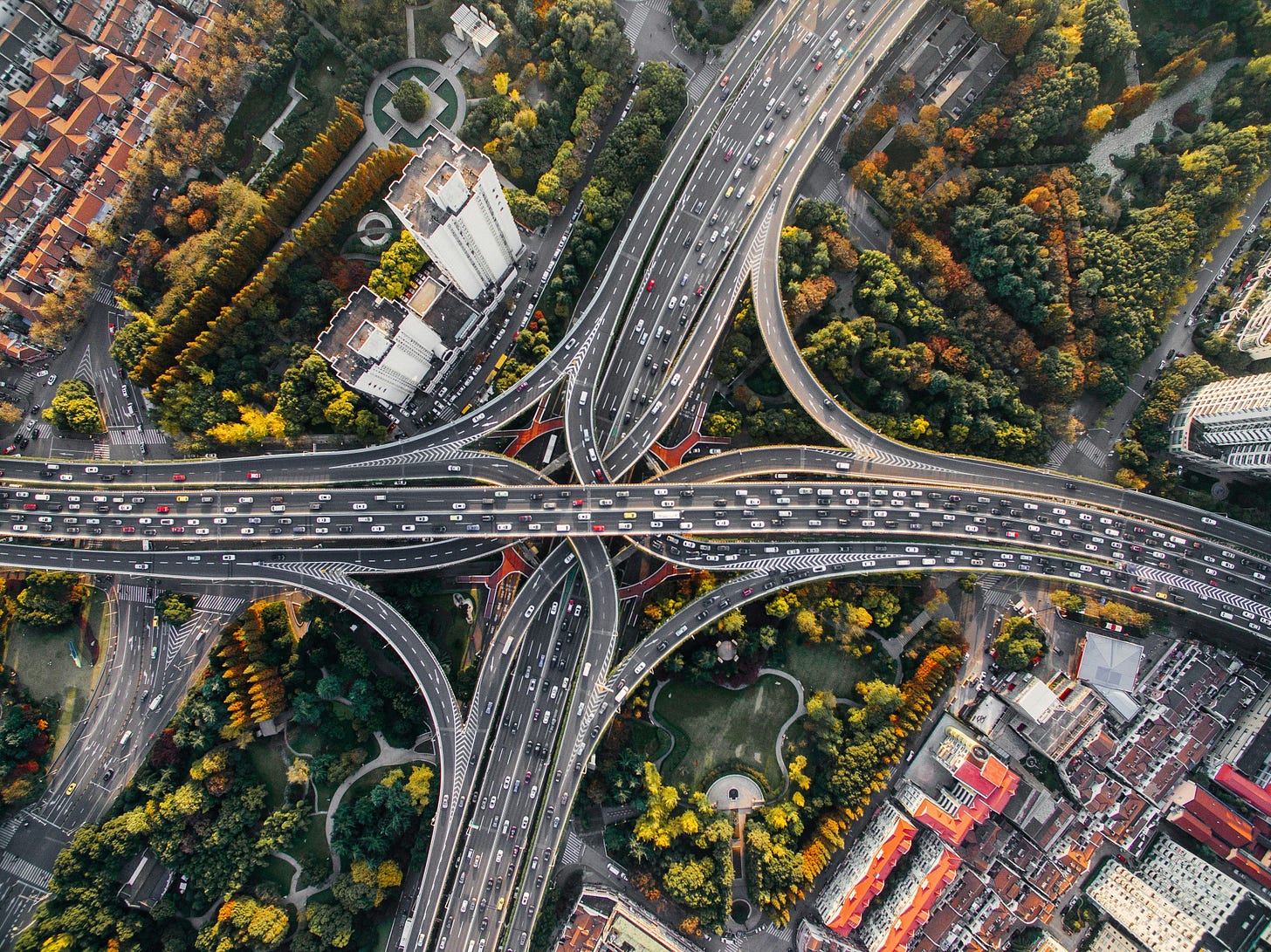The Road to Nowhere: Understanding Induced Demand in Urban Planning
Exploring the Unintended Consequences of Infrastructure Growth
Photo by Denys Nevozhai on Unsplash
In the quest to alleviate traffic congestion, city planners and policymakers have long turned to a seemingly straightforward solution: build more roads. The logic is intuitive—more road space should mean smoother traffic flow and shorter travel times. Yet, as many urban centres have discovered to their dismay, this well-intentioned strategy often backfires, leading to a phenomenon known as induced demand.
What is Induced Demand?
Induced demand is a concept rooted in economics, describing the increase in consumption that occurs when the supply of a good or service is increased. In transportation, this means that expanding roadway capacity can lead to more people using the roads, ultimately resulting in congestion levels that are as bad as, or even worse than, before the expansion.
The Mechanics of Induced Demand
To understand induced demand, consider the following sequence of events:
Road Expansion: A city expands a major highway to reduce traffic congestion.
Initial Relief: The new lanes initially provide relief, decreasing travel times and easing congestion.
Behavioural Changes: Encouraged by the improved conditions, more people decide to drive. Some may choose to travel during peak hours, others might switch from public transportation to driving, and new drivers, previously deterred by traffic, take to the roads.
Land Use Changes: Over time, the improved accessibility can lead to changes in land use. Developers build new housing and commercial developments in areas that are now easier to reach by car, prompting even more driving.
Return to Congestion: The increased number of drivers soon fills the new road space, bringing congestion back to its original level or worse.
Historical Context and Evidence
The concept of induced demand is not merely theoretical; it has been documented and analysed extensively. One of the earliest and most cited studies is the 1962 work by economist Anthony Downs, who articulated the "fundamental law of highway congestion." According to Downs, traffic expands to fill the available road space, a theory supported by numerous studies since then.
A landmark study published in 2011 by economists Matthew Turner and Gilles Duranton examined data from hundreds of U.S. cities and found a near one-to-one relationship between highway capacity and vehicle kilometres travelled. Their conclusion was stark: building more roads leads to more driving, and thus more congestion.
Implications for Urban Planning
The implications of induced demand are profound and challenge conventional approaches to traffic management. If expanding road capacity ultimately leads to more traffic, then alternative strategies must be considered. Here are a few:
Public Transportation: Investing in robust public transit systems can provide a viable alternative to driving, reducing the number of cars on the road.
Active Transportation: Promoting walking and cycling through dedicated infrastructure can alleviate pressure on roadways.
Congestion Pricing: Implementing fees for driving in congested areas during peak times can disincentivize unnecessary trips and encourage the use of alternative modes of transport.
Smart Growth: Encouraging development patterns that reduce the need for long commutes can help manage traffic demand. This includes mixed-use developments that bring housing, work, and amenities closer together.
A Path Forward
Addressing traffic congestion requires a multifaceted approach that acknowledges the limitations of road expansion as a standalone solution. Urban planners and policymakers must consider the broader implications of induced demand and prioritize sustainable, long-term strategies for managing transportation.
By focusing on public transit, active transportation, and smart growth, cities can create more resilient and efficient transportation systems. The goal is not just to build more roads but to build better cities—places where mobility is balanced with liveability, and where progress does not come at the cost of perpetual gridlock.
In the end, understanding and addressing induced demand is about more than managing traffic; it's about envisioning a future where transportation works for everyone, and where the paradox of progress is replaced by the promise of sustainable growth.
As always, feel free to reach out with any questions or comments. Happy musing!




